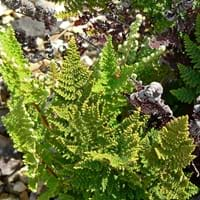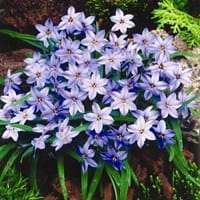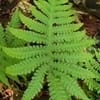Life Span
Annual and Perennial
Perennial
Type
Fern
Bulb or Corm or Tuber
Origin
California
South America, Argentina
Types
Not Available
Not Available
Habitat
Chaparral, Rocky areas
Temperate Regions
USDA Hardiness Zone
7-10
5-9
Sunset Zone
5, 6, 7, 8, 9, 12, 14, 15, 16, 17, 18, 19, 20, 21, 22, 23, 24
21,22
Habit
Clump-Forming
Clump-Forming
Flower Color
Non Flowering Plant
Light Blue, Light Purple, Silver, Sky Blue
Flower Color Modifier
Bicolor
Bicolor
Fruit Color
Non Fruiting Plant
Not Available
Leaf Color in Spring
Not Available
Green, Light Green, Gray Green
Leaf Color in Summer
Not Available
Light Green
Leaf Color in Fall
Not Available
Several shades of Green
Leaf Color in Winter
Not Available
Light Green
Leaf Shape
Pinnate
Grass like
Plant Season
Spring, Summer, Fall, Winter
Spring
Sunlight
Full Sun, Partial Sun
Full Sun, Partial Sun, Partial shade
Growth Rate
Medium
Medium
Type of Soil
Clay, Loam, Sand
Clay, Loam, Sand
The pH of Soil
Acidic, Neutral, Alkaline
Acidic, Neutral, Alkaline
Soil Drainage
Well drained
Well drained
Bloom Time
Not Available
Early Spring, Spring, Late Winter
Tolerances
Drought
Drought
Where to Plant?
Ground
Container, Ground
How to Plant?
Seedlings
By dividing rhizomes, tubers
Plant Maintenance
Medium
Medium
Watering Requirements
Needs watering once a week, Never Over-water
Average Water Needs, Do Not over Water, Requires regular watering
In Summer
Lots of watering
Lots of watering
In Spring
Moderate
Moderate
In Winter
Average Water
Average Water
Soil pH
Acidic, Neutral, Alkaline
Acidic, Neutral, Alkaline
Soil Type
Clay, Loam, Sand
Clay, Loam, Sand
Soil Drainage Capacity
Well drained
Well drained
Sun Exposure
Full Sun, Partial Sun
Full Sun, Partial Sun, Partial shade
Pruning
Prune to control growth
Remove damaged leaves, Remove dead branches, Remove dead leaves
Fertilizers
All-Purpose Liquid Fertilizer
All-Purpose Liquid Fertilizer
Pests and Diseases
Not Available
Slugs, Snails
Plant Tolerance
Drought
Drought
Flower Petal Number
Single
Single
Foliage Texture
Fine
Medium
Foliage Sheen
Matte
Matte
Attracts
Not Available
Bees, Birds, Hummingbirds
Allergy
Not Available
Not Available
Aesthetic Uses
Ground Cover, Showy Purposes
Showy Purposes
Beauty Benefits
Not Available
Not Available
Environmental Uses
Not Available
Air purification
Medicinal Uses
No Medicinal Use
No Medicinal Use
Part of Plant Used
Whole plant
Flowers
Other Uses
useful as a ground cover
Not Available
Used As Indoor Plant
No
Yes
Used As Outdoor Plant
Yes
Yes
Garden Design
Container, Groundcover, Mixed Border, Rock Garden, Wall
Container, Lawns and Turf, Mixed Border, Rock Garden / Wall, Wildflower
Botanical Name
Cheilanthes clevelandii
Ipheion uniflorum
Common Name
Myriopteris clevelandii
Spring Starflower, Springstar
In Hindi
Myriopteris clevelandii
Spring Starflower
In German
Myriopteris clevelandii
Frühling Borretsch
In French
Myriopteris clevelandii
Spring Starflower
In Spanish
Myriopteris clevelandii
primavera Flor de estrella
In Greek
Myriopteris clevelandii
άνοιξη starflower
In Portuguese
Mariopteris clevelandii
primavera Starflower
In Polish
Myriopteris clevelandii
Wiosna Starflower
In Latin
Myriopteris clevelandii
Spring Starflower
Phylum
Tracheophyta
Magnoliophyta
Class
Polypodiopsida
Lilopsida
Order
Polypodiales
Asparagales
Family
Pteridaceae
Liliaceae
Genus
Cheilanthes
Ipheion
Clade
Not Available
Angiosperms, Monocots
Tribe
Not Available
Gilliesieae
Subfamily
Not Available
Allioideae
Number of Species
Not Available
Difference Between Myriopteris Clevelandii and Spring Starflower
If you are confused whether Myriopteris Clevelandii or Spring Starflower are same, here are some features about those plants to help you choose better. Many people think that these two plants have the same characteristics, but one can see Myriopteris Clevelandii and Spring Starflower Information and learn more about it. Fertilizers required for proper growth of Myriopteris Clevelandii are All-Purpose Liquid Fertilizer, whereas for Spring Starflower fertilizers required are All-Purpose Liquid Fertilizer. Hence, one should know the basic difference between Myriopteris Clevelandii and Spring Starflower if you are planning to have them in your garden to enhance its beauty.
<
Flowering PlantsImportance of Myriopteris Clevelandii and Spring Starflower
Want to have the most appropriate plant for your garden? You might want to know the importance of Myriopteris Clevelandii and Spring Starflower. Basically, these two plants vary in many aspects. Compare Myriopteris Clevelandii and Spring Starflower as they differ in many characteristics such as their life, care, benefits, facts, etc. Every gardener must at least have the slightest clue about the plants he wants to plant in his garden. Compare their benefits, which differ in many ways like facts and uses. The medicinal use of Myriopteris Clevelandii is No Medicinal Use whereas of Spring Starflower is No Medicinal Use. Myriopteris Clevelandii has beauty benefits as follows: Not Available while Spring Starflower has beauty benefits as follows: Not Available.
Compare Facts of Myriopteris Clevelandii vs Spring Starflower
How to choose the best garden plant for your garden depending upon its facts? Here garden plant comparison will help you to solve this query. Compare the facts of Myriopteris Clevelandii vs Spring Starflower and know which one to choose. As garden plants have benefits and other uses, allergy is also a major drawback of plants for some people. Allergic reactions of Myriopteris Clevelandii are Not Available whereas of Spring Starflower have Not Available respectively. Having a fruit bearing plant in your garden can be a plus point of your garden. Myriopteris Clevelandii has no showy fruits and Spring Starflower has no showy fruits. Also Myriopteris Clevelandii is not flowering and Spring Starflower is not flowering . You can compare Myriopteris Clevelandii and Spring Starflower facts and facts of other plants too.





